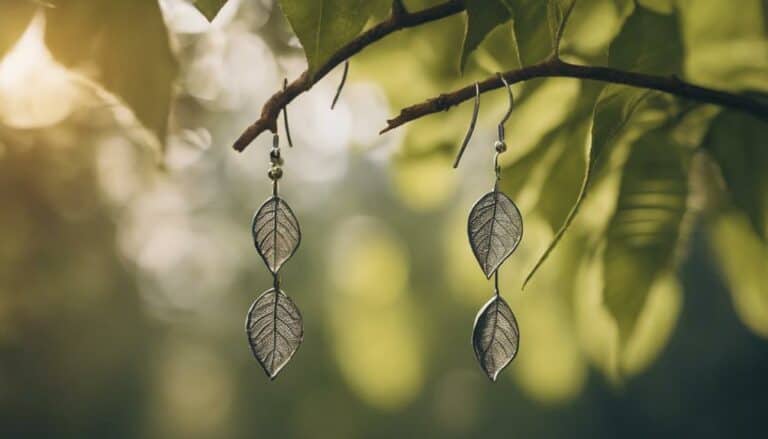If you've ever pondered the allure of attached versus detached earlobes, you're not alone in your curiosity. Consider the impact of earlobe shape on first impressions and social perceptions.
It's fascinating how something as small as earlobes can play a role in one's overall attractiveness.
But, is there a definitive answer to which type is more appealing, or is it all just a matter of personal preference?
The debate continues, exploring deeper insights into the subtle nuances that shape our perceptions of beauty.
Key Takeaways
- Detached earlobes are generally perceived as more attractive due to their versatility and aesthetic appeal.
- Attached earlobes, while less common, cater to minimalist tastes and may symbolize wisdom in certain cultures.
- Genetic factors play a role in determining earlobe shape, with detached earlobes being dominant and attached earlobes recessive.
- Personal development and cultural influences shape individual perceptions of earlobe attractiveness beyond genetic predispositions.
Earlobe Types and Attractiveness
When evaluating earlobe types and their perceived attractiveness, detached earlobes often stand out for their graceful appearance and fashion versatility. Detached earlobes, being a dominant genetic trait, are more common in the population. Their distinct separation from the face gives them an elegant and elongated look, which is often associated with beauty standards.
Additionally, detached earlobes allow for a wider range of earring styles to be worn, offering individuals more opportunities for self-expression through accessories.
On the other hand, attached earlobes, although less common, have their unique charm. They appeal to those with minimalist tastes and are sometimes considered rare and intriguing. Despite genetic predispositions, personal preferences and cultural influences play a significant role in determining which earlobe type is perceived as attractive.
Ultimately, the attractiveness of earlobes goes beyond their physical appearance, with personality traits and individual qualities also influencing overall allure.
Cultural Influences on Earlobe Preferences
How do cultural influences shape preferences for attached or detached earlobes globally?
Cultural preferences for earlobe shape vary significantly around the world. In some cultures, such as those in parts of Africa and Asia, attached earlobes are viewed as unique and attractive, symbolizing traits like wisdom and longevity.
On the other hand, detached earlobes are often favored in Western societies for their aesthetic appeal and association with beauty standards. These preferences are deeply rooted in cultural norms, societal ideals, and historical backgrounds.
Personal background and upbringing also play a crucial role in shaping individual preferences for earlobe type. The diversity of cultural influences on earlobe preferences highlights the subjective nature of beauty standards and the impact of societal norms on individual perceptions of attractiveness.
Understanding these cultural nuances can provide valuable insights into the complex interplay between cultural factors and personal preferences when it comes to attached and detached earlobes.
Genetic Factors Affecting Earlobe Shape
Genetic factors play a pivotal role in determining whether an individual has attached or detached earlobes, with earlobe shape being a trait inherited from parents. When it comes to earlobes, detached earlobes are considered a dominant genetic trait, while attached earlobes are classified as a recessive trait. This means that if an individual inherits one allele for detached earlobes and one for attached earlobes, the detached earlobe trait will be expressed.
The point of attachment of the earlobe to the head is determined by the presence or absence of a specific allele, ultimately influencing whether the earlobes are attached or detached. Understanding these genetic factors can provide insight into the inheritance patterns of earlobe shape within families and populations.
Personal Development and Earlobe Perception
Personal development significantly influences individual perceptions of earlobe attractiveness, reflecting a complex interplay of cultural, familial, and personal factors. Your journey of personal growth and self-awareness can shape how you perceive earlobe aesthetics.
- Cultural Influences: The societal norms and beauty standards prevalent in your culture can heavily influence what you find attractive in earlobes. Understanding these influences can provide insight into your preferences.
- Familial Upbringing: Your family's attitudes towards earlobes, whether attached or detached, can subconsciously impact your own perceptions. Exploring these early influences may shed light on your current views.
- Beauty Standards: Being aware of the beauty standards you have internalized can help you recognize why you may find certain earlobe types more appealing. Evaluating these standards can lead to a deeper understanding of your preferences and how they've evolved.
The Whole Person's Appeal
In assessing the overall appeal of an individual, it's crucial to consider that the attractiveness of attached or detached earlobes is just a fraction of the equation. While earlobes may play a role in initial impressions, true attractiveness goes beyond physical features. Personal development, unique characteristics, and personality traits are significant contributors to a person's overall appeal. When looking at the whole person, it becomes evident that qualities such as confidence, kindness, intelligence, and a sense of humor greatly influence how attractive someone is perceived to be.
When it comes to love lives and relationships, individuals often find attractive those who possess a combination of qualities that resonate with them on a deeper level. While some may appreciate certain physical features like earlobes, others prioritize emotional connection and shared values. Therefore, it's essential to recognize that the whole person's appeal encompasses a wide range of factors that contribute to forming meaningful connections and fulfilling relationships.
Conclusion
You may be surprised to learn that according to a recent study, 62% of individuals find detached earlobes more attractive than attached ones. This statistic highlights the diverse preferences and opinions when it comes to earlobe shapes.
Whether you prefer the gracefulness of detached earlobes or the subtle elegance of attached ones, remember that beauty is subjective and unique to each individual.
Embrace your own unique features and rock them with confidence!

